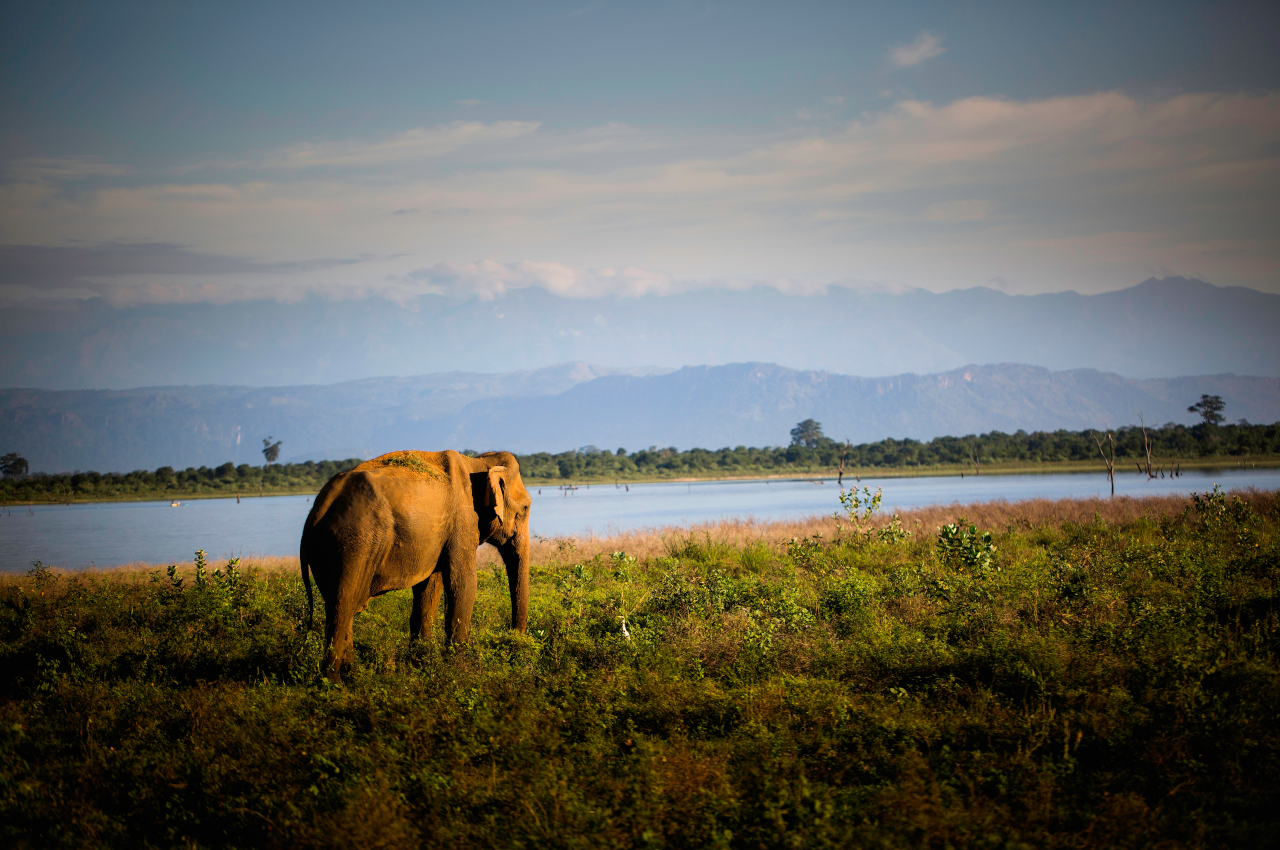
The Udawalawe National Park, is a four hour drive from Colombo, and is well known for its important concentration of elephants. The establishment of the park was realised after the construction of the reservoir of Udawalawe, with the objective of protecting the catchment area of the reservoir and to supply refuge for the wildlife. Today the park is a safe haven for about 400 elephants, of which 150 are permanent residents. The park is the only place which supplies a sufficient amount of water and food for the surrounding wildlife during the dry season. About 200 to 300 transient elephants live here regularly, taking corridors maintained for this purpose. These corridors help the animals move from one protected zone to another, and at the same time, ease conflicts between humans and elephants as the park is surrounded by agricultural land. This network also facilitates mating between elephants of different herds, thus avoiding genetic isolation.
The National Park of Udawalawe is composed of prairies, grasslands, and a teak forest along the Walawe River. The large area of grasslands facilitates the observation of elephants. At times, you can witness about one hundred elephants gathered near the many water points of the park. Being in close proximity to the elephants, while they engage in their activities, is a surreal and unforgettable experience.
The elephants are not the only point of interest in Udawalawe. The park is also known to house three cat species: the Rusty-spotted cat, the fishing cat, and the Sri Lankan leopard. Additionally, amongst others, it houses the Golden jackal, Asian palm civet, toque macaque, tufted grey langur, and the Indian hare. You may also see bandicoot (marsupial), sambar deer, axis deer, Indian muntjac, Sri Lankan spotted chevrotain, wild boar, sloth bears (known as lazy bear, like Baloo in the Jungle Book), golden jackal, a large quantity of water buffaloes, and of course some crocodiles.
Bird lovers can observe a variety of species, including endemic species like Gallo Perdix of Ceylon, Red-faced Malkoha, and the Sri Lankan grey hornbill.
INFORMATIONS COMPLÉMENTAIRES SUR LES VISITES DU PARC
The best moment to visit the park is early in the morning or late in the afternoon. The park opens at 6 am, but it is better to get there earlier. The queues at the ticket booth, as well as the number of jeeps at the parking lot, can be worrying, but as soon as the safari starts, the jeeps scatter across different paths. Generally, the safari takes 3 to 4 hours.
It is possible to visit the elephant orphanage “Elephant Transit Home” in the park, a refuge for some ten elephants aged 1 to 5. The orphans receive appropriate care before being released into the park when they are old enough to fend for themselves.





